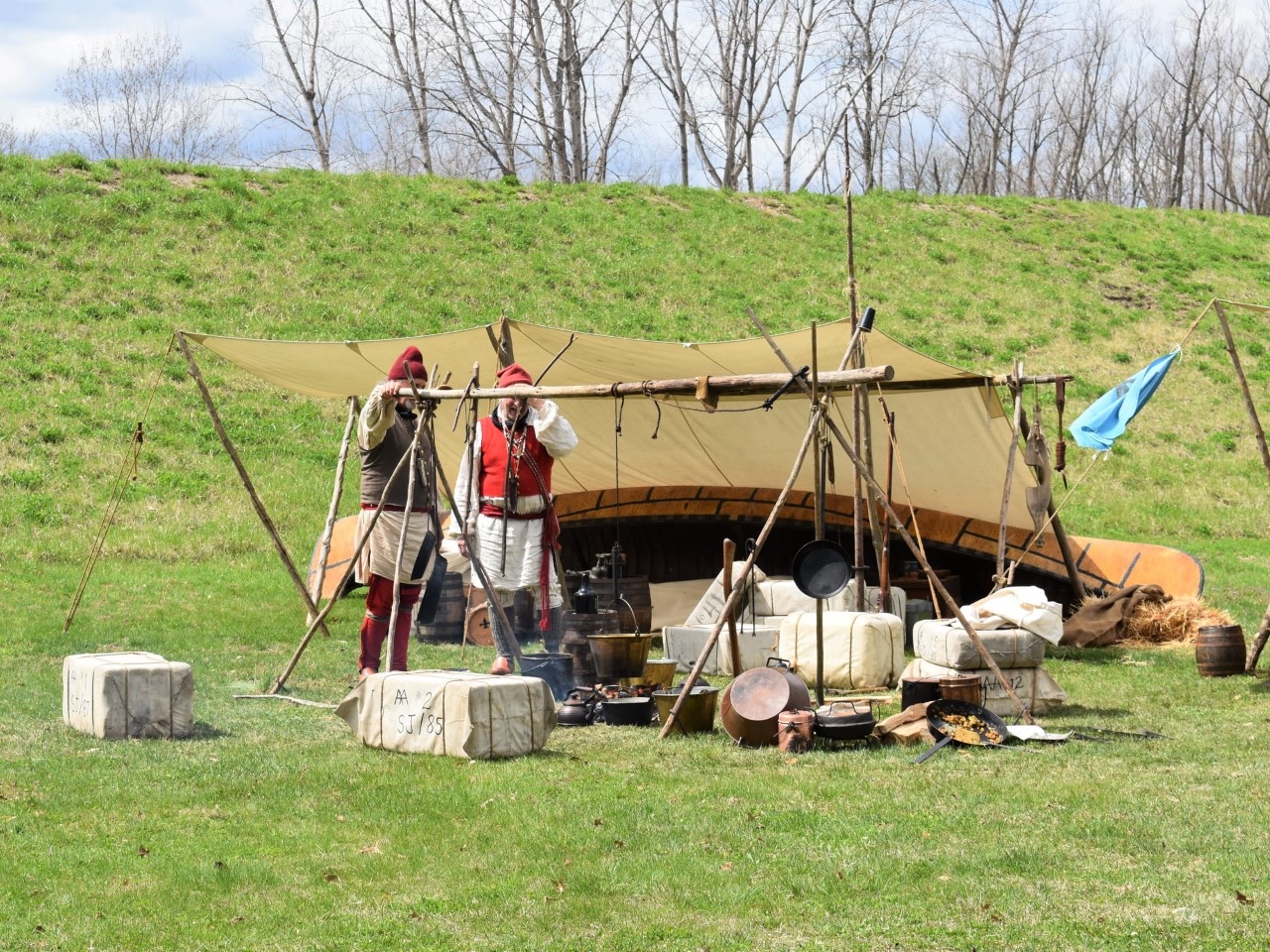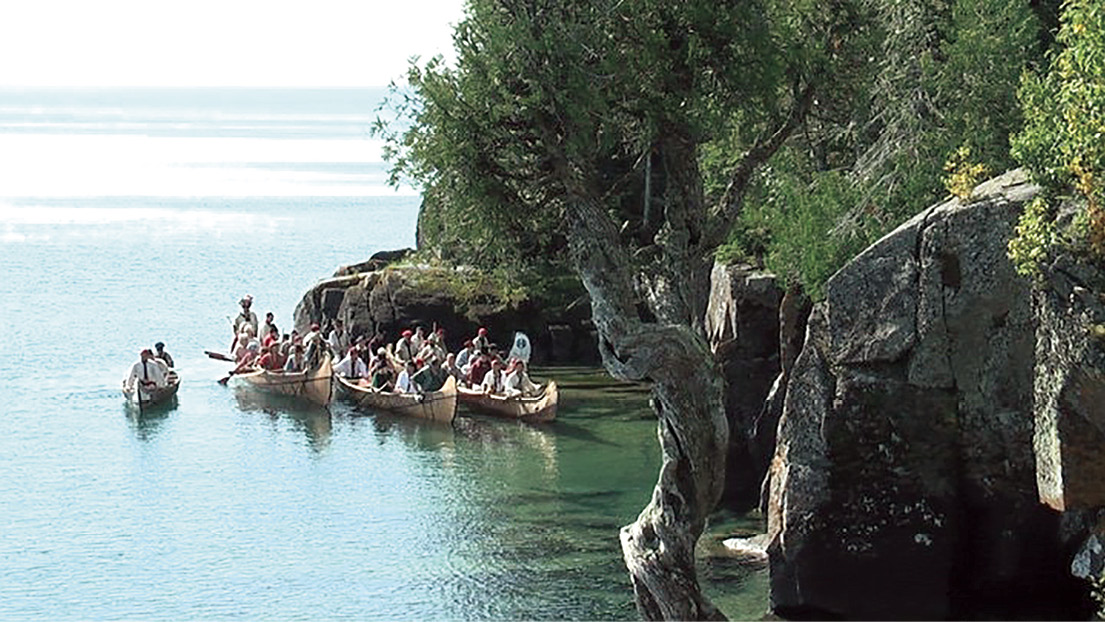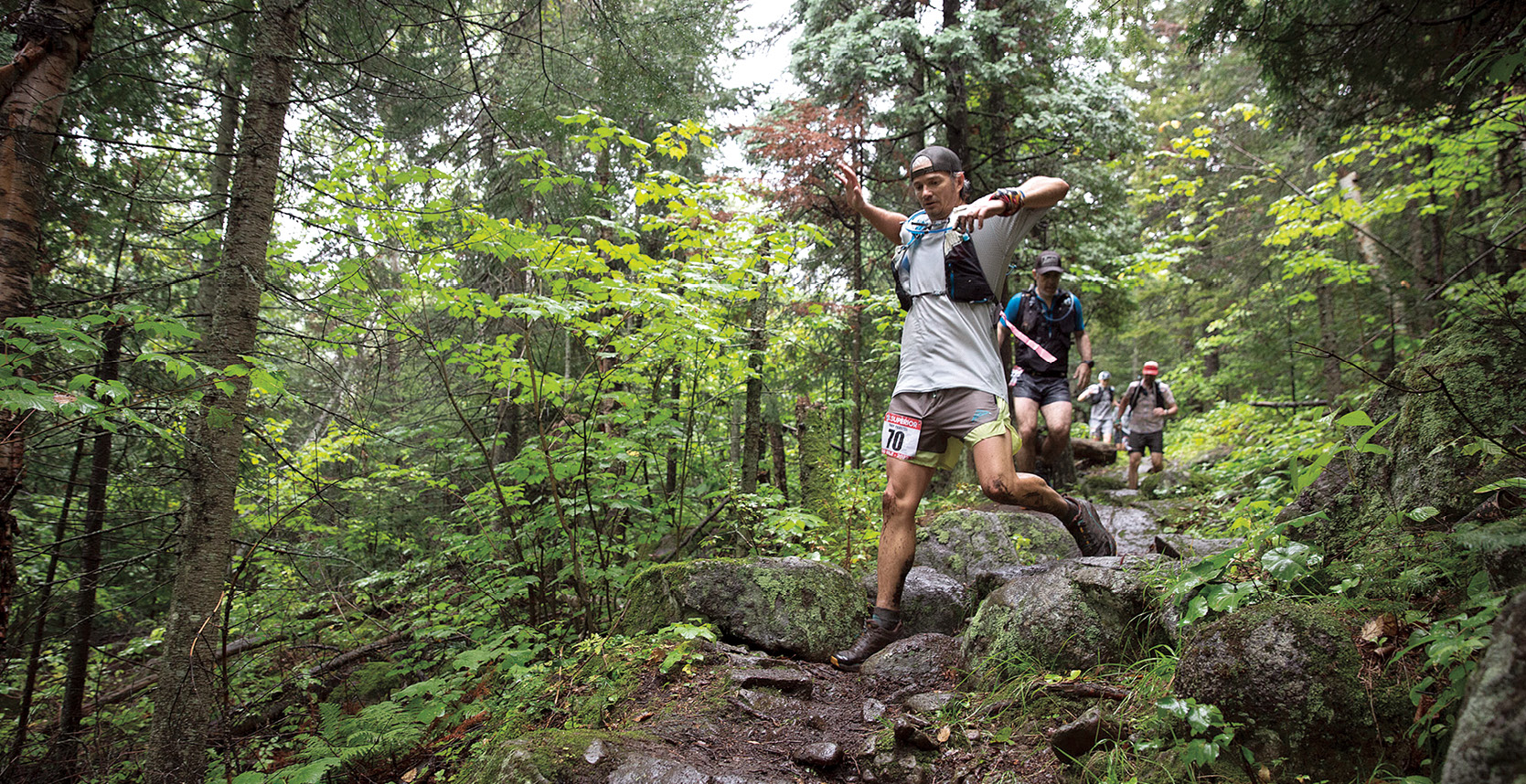For anyone even vaguely familiar with the history and lore of Lake Superior, it’s hard to look out across its expansive waters and not conjure up an iconic image of a heavy, cargo-ladened birchbark canoe powered by a cadre of rugged, but stylish paddlers—the voyageurs—tirelessly traversing the waters of the Great Lakes.
In today’s modern paddling world of ultra lightweight Kevlar canoes, graphite paddles, freeze-dried instant meals and ultra compact, bombproof gear, romantic images of these historic paddlers clash unimaginably with the day-to-day realities of being a voyageur in 18th-19th century North America.
As early as 1670, the French had established the Hudson’s Bay Company and other posts along water transportation and portage routes as part of their cargo-shipping network to satisfy demands for furs in Europe. Those shipping routes grew as trading goods from Europe were transported inland westward from Montreal, while furs and other commodities were carried east, transferring cargos at trading post bases such as the North West Company, formed on Lake Superior in the late 1770s.
These cargo networks were paddled by French-Canadian men recruited by the trading companies to keep the exchange of commerce flowing via water and portage routes back and forth across the Great Lakes region of the continent and beyond.
We know these men as voyageurs.
Stout of physique, most voyageurs were only about 5 feet, 4 inches tall and were required to carry several cargo bundles (each weighing 90 pounds) over miles of portages. Huge, birchbark-covered canoes would weigh 300 pounds. Over the course of the 12-16 weeks it would take to bring goods to transfer points, it was not uncommon to lose a voyageur to drowning, or suffer broken limbs, hernias and damaged limbs.

Meals were taken twice daily, consuming foods high in calories; provisions that could be preserved indefinitely. Typically, breakfast came after a sunrise departure and three hours of paddling. The meal consisted of pork, beans and a biscuit that was prepared the night before. Because of the amount of fat included in most meals, voyageurs were often referred to as “pork eaters.”
Pemmican (a mixture of meat and fat) was a large part of the voyageur diet, providing nearly 5,000 calories, per day, per voyageur. Native American tribes prepare pemmican for trade by pounding slices of game meat or sturgeon into thin, spongy portions that could be eaten raw or cooked, or even enhanced with sugar or serviceberries.
Voyageur canoes came in two sizes: the large ‘Montreal’ canoe used to bring goods from the coast across the Great Lakes to Lake Superior, and the ‘North’ canoe for routes through rapids and swamps further inland.
Canoes were constructed of a birchbark ‘skin’ stitched with tree roots and sealed with pine pitch—all over a pine or cedar framework. Seats were fashioned from narrow, 4-inch boards and the entire outside of the canoe sealed by daubing or “gumming” the surface with pitch. A “repair” kit consisting of a roll of birchbark and a quantity of gumming was carried in each boat and used daily to repair leaks in the hull.
Due to the weight of the cargo and the fragility of the hull, long poles were arranged along the keel to support the weight of the 90-pound cargo bundles, as well as to prevent damage to the fragile sides of the canoe. The larger Montreal vessels could support 10 thousand pounds of cargo, one-third of which was the weight of the crew and their provisions.
Paddles came in various lengths, from only 2 feet long for middlemen crews in Montreal boats, to a slightly longer paddle used by the steerman and the longest paddle reserved for the foreman (used to guide the canoe through rapids). Each voyageur also had a 10-foot-long setting pole fashioned with an iron ferrule (with a line attached to each end) for lining canoes through rapids.

An article written in Appleton’s Journal, 1878, entitled “A Voyage With The Voyageurs” cites the type of bedding used: “…after being untied from its protecting oil-cloth, …consists of three blankets and a pillow…” The use of oil cloth as a waterproof outer wrap for gear was common throughout the region. A large, oilcloth ‘tarp’ was often attached to an overturned canoe to serve as a shelter for several voyageurs.
The water environment required that clothing dry quickly, making cotton, linen, and wools the preferred fabric over treated animal hides. Long waist coats, cinched with a long sash, trousers or leggings, and a variety of hats made up the traditional wardrobes worn throughout the course of the voyageur era.
One challenge that has continued from the voyageurs to the paddlers of today is the tormenting by mosquitoes. For lack of modern insect repellants, paddlers would “besmear their face with butter or grease” or “have large kettles constantly smoking in our boat to keep them away.”
The romantic notion of the voyageur lives on in many north country paddlers. Tales of their exploits and daily drudgery add to their mystique and provide yet another invaluable aspect to the lore of Lake Superior and beyond.




